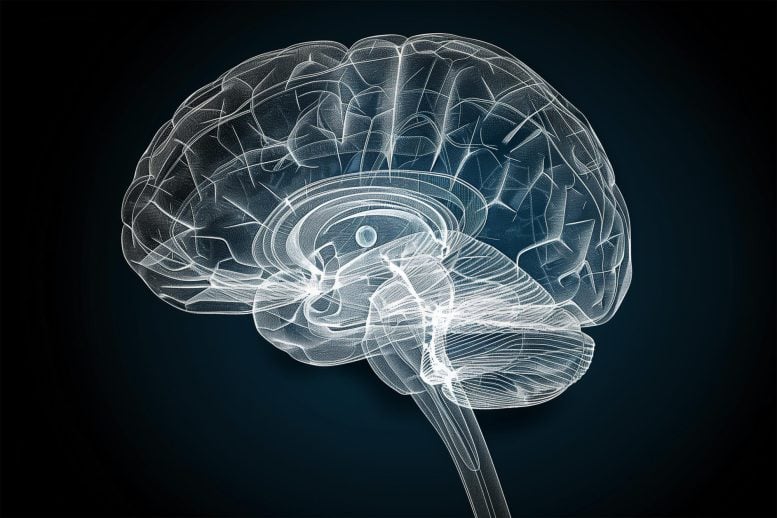Erasing “Bad Memories” To Combat Parkinson’s Tremors


Researchers have identified a potential new approach to preventing dyskinesia in Parkinson’s patients by targeting a protein called Activin A, which is implicated in the development of motor memory related to Parkinson’s treatment. Their findings suggest that blocking Activin A could erase the brain’s detrimental motor responses to L-DOPA, prolonging its usefulness and possibly eliminating dyskinesia symptoms.
A new study suggests that dyskinesia in Parkinson’s patients could be prevented by targeting the Activin A protein, which influences the brain’s motor memory of L-DOPA treatments, potentially improving treatment outcomes by eliminating dyskinesia.
Although common treatments for Parkinson’s disease can address short-term symptoms, they can also cause extensive problems for patients in the long run. Specifically, treatments can cause dyskinesia, a form of uncontrollable movements and postures.
In a recent study published recently in The Journal of Neuroscience, researchers at the University of Alabama at Birmingham took a different approach to dyskinesia and treated it like a “bad motor memory.” They found that blocking a protein called Activin A could halt dyskinesia symptoms and effectively erase the brain’s “bad memory” response to certain Parkinson’s treatments.
Dyskinesia refers to involuntary, erratic movements such as twitching, fidgeting, and jerking, commonly experienced by patients with conditions like Parkinson’s disease, especially after long-term use of medications such as levodopa. These movements are not a result of the disease itself but rather a side effect of the treatment, often exacerbated by prolonged drug therapy. Dyskinesia can significantly affect a person’s quality of life, making daily activities and precise movements challenging.
Innovative Approach to Preventing Dyskinesia
“Instead of looking for a completely alternative treatment, we wanted to see if there was a way to prevent dyskinesia from developing in the first place,” said David Figge, M.D., Ph.D., lead study author and assistant professor in the UAB Department of Pathology. “If dyskinesia does not occur, then patients could potentially stay on their Parkinson’s treatment for longer.”
Parkinson’s disease is a neurodegenerative disorder caused by the death of neurons that make dopamine. To counteract this loss, clinicians currently use L-DOPA, a drug that is a precursor to dopamine.

By prohibiting the Activin A protein from functioning, researchers were able to halt the development of dyskinesia symptoms and effectively erase the brain’s “bad memory” response to L-DOPA treatments. Credit: SciTechDaily.com
Exploring the Brain’s Response to Parkinson’s Treatment
Short term, L-DOPA is helpful; but long term, it leads to L-DOPA-induced dyskinesia in some patients, which causes involuntary, erratic movements such as twitching, fidgeting, head-bobbing or body swaying. Even if a patient stops taking L-DOPA for a certain period, dyskinesia has proved to come back quickly — as soon as these patients restart treatment.
“It seemed like the brain was forming a motor memory, and each time a patient received L-DOPA treatment, this memory then recalled upon every subsequent L-DOPA exposure,” said Karen Jaunarajs, Ph.D., assistant professor in the UAB Department of Neurology.
Due to the overlaps between motor and behavioral memory, the team decided to approach dyskinesia like a bad memory. If they could find a way to cause the brain to forget its previous treatment history, they could potentially prolong the usefulness of L-DOPA for Parkinson’s treatment.
Mechanisms of Motor Memory in Parkinson’s Treatment
Investigators first studied the striatum, the brain region significant to motor control, to figure out which cells were storing the “bad motor memory.” The most significant changes observed were in neurons called D1-MSNs, which acted in a similar way to neurons in the hippocampus when it is forming a memory.
“We found that some of these D1-MSNs were expressing genes indicating that they were being activated by L-DOPA and genes that were necessary for creating new connections with other cells,” Figge said. “This was very similar to what happens when you learn something new and recall that memory.”
Scientists found that one gene in these L-DOPA-activated D1-MSN neurons is translated into a protein called Activin A. By blocking the function of Activin A, researchers were able to block the development of L-DOPA-induced dyskinesia in mouse models.
“In essence, by prohibiting the protein from functioning, we were able to halt the development of dyskinesia symptoms in the mouse models, effectively erasing the brain’s memory of the motor response to L-DOPA,” Jaunarajs said.
Ultimately, the hope is that these findings will lead to an understanding of how to block these bad motor memories altogether — eradicating dyskinesia-related symptoms in Parkinson’s patients.
Reference: “Differential Activation States of Direct Pathway Striatal Output Neurons during l-DOPA-Induced Dyskinesia Development” by David A. Figge, Henrique de Amaral Oliveira, Jack Crim, Rita M. Cowell, David G. Standaert and Karen L. Eskow Jaunarajs, 25 June 2024, Journal of Neuroscience.
DOI: 10.1523/JNEUROSCI.0050-24.2024
The study was supported by the Parkinson’s Association of Alabama, the American Parkinson Disease Association and the United States Department of Defense.

